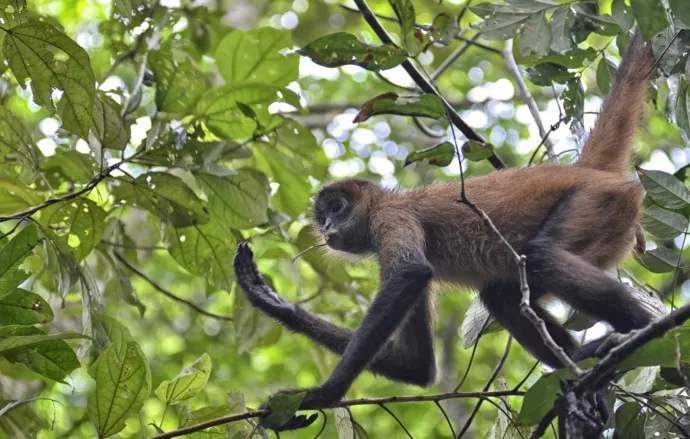As the lush canopy of forests gives way to the encroaching edge of human development, the lives of forest-dwelling creatures hang in the balance. Among them, primates stand as social sentinels, their behaviors offering insights into the profound impacts of deforestation on ecological communities. In a groundbreaking study led by Laura Bolt, a primatologist at the University of Toronto Mississauga, the complex interplay between primates and their changing habitats has come to light, revealing the remarkable adaptability of these charismatic creatures in the face of environmental upheaval.
Published in the American Journal of Primatology, Bolt and her research collaborator, Professor Amy Schreier from Regis University, shed light on the behavioral dynamics of Central American spider monkeys, white-faced capuchin monkeys, and mantled howler monkeys in response to deforestation in northeastern Costa Rica. Their study, conducted at the La Suerte Biological Research Station, operated by the Maderas Rainforest Conservancy, offers a nuanced understanding of how these primates modify their social behaviors to navigate anthropogenically altered landscapes.
The findings underscore a stark reality: as forests are fragmented and cleared, primates must swiftly adapt or face the perilous consequences of habitat loss. Among the most striking observations was the marked decrease in social behaviors exhibited by spider monkeys along the forest edge. Accustomed to the towering heights of mature trees and lipid-rich fruits found deep within undisturbed forests, these arboreal acrobats conserve energy in the diminished canopy of deforested areas—a poignant reminder of the resource limitations imposed by human activity.
Similarly, white-faced capuchin monkeys, renowned for their intelligence and agility, employ subtle strategies to evade predators in the exposed terrain of forest edges. Vocalizations are muted, and conflicts minimized, as these diminutive primates navigate the precarious balance between survival and vulnerability. Yet, despite their resilience, concerns linger for the long-term viability of howler monkeys, whose steadfast adherence to established behaviors may leave them vulnerable to the shifting tides of environmental change.
Bolt’s research transcends mere observation, offering a glimpse into the complex interplay between ecology and behavior—a nexus where the fate of species hangs in the balance. As habitats vanish and ecosystems teeter on the brink of collapse, understanding the behavioral adaptations of primates serves as a crucial cornerstone of conservation efforts. By unraveling the intricacies of social dynamics, Bolt and her colleagues pave the way for informed conservation strategies aimed at safeguarding these invaluable ecosystems.
Beyond the realm of academia, Bolt’s work resonates with a broader imperative: the preservation of biodiversity and the protection of our shared natural heritage. As primates navigate the ever-shifting landscapes of a rapidly changing world, their stories serve as poignant reminders of the interconnectedness of all life forms—and the urgent need for collective action to preserve the delicate tapestry of life on Earth. In the face of deforestation and ecological upheaval, Bolt’s research stands as a beacon of hope, illuminating pathways toward a more sustainable and harmonious future for primates and humans alike.
